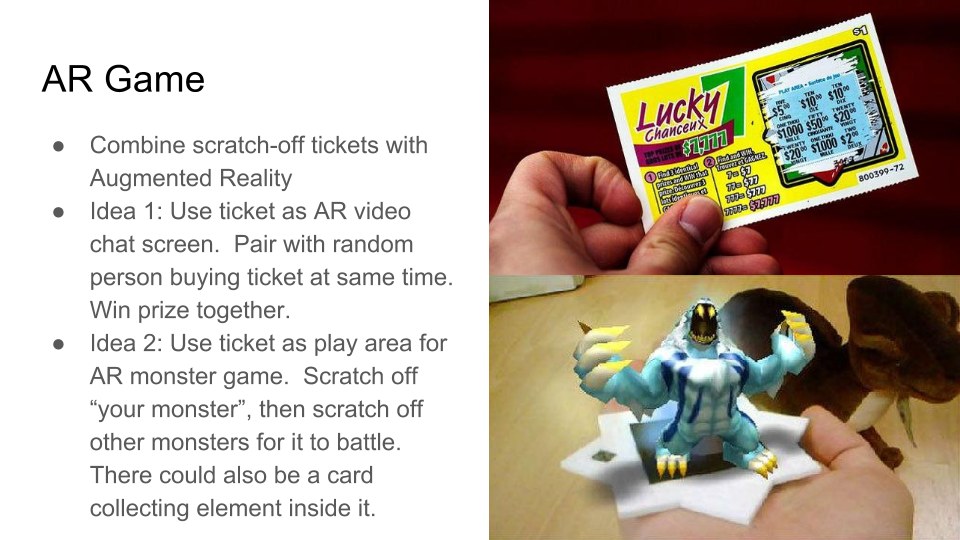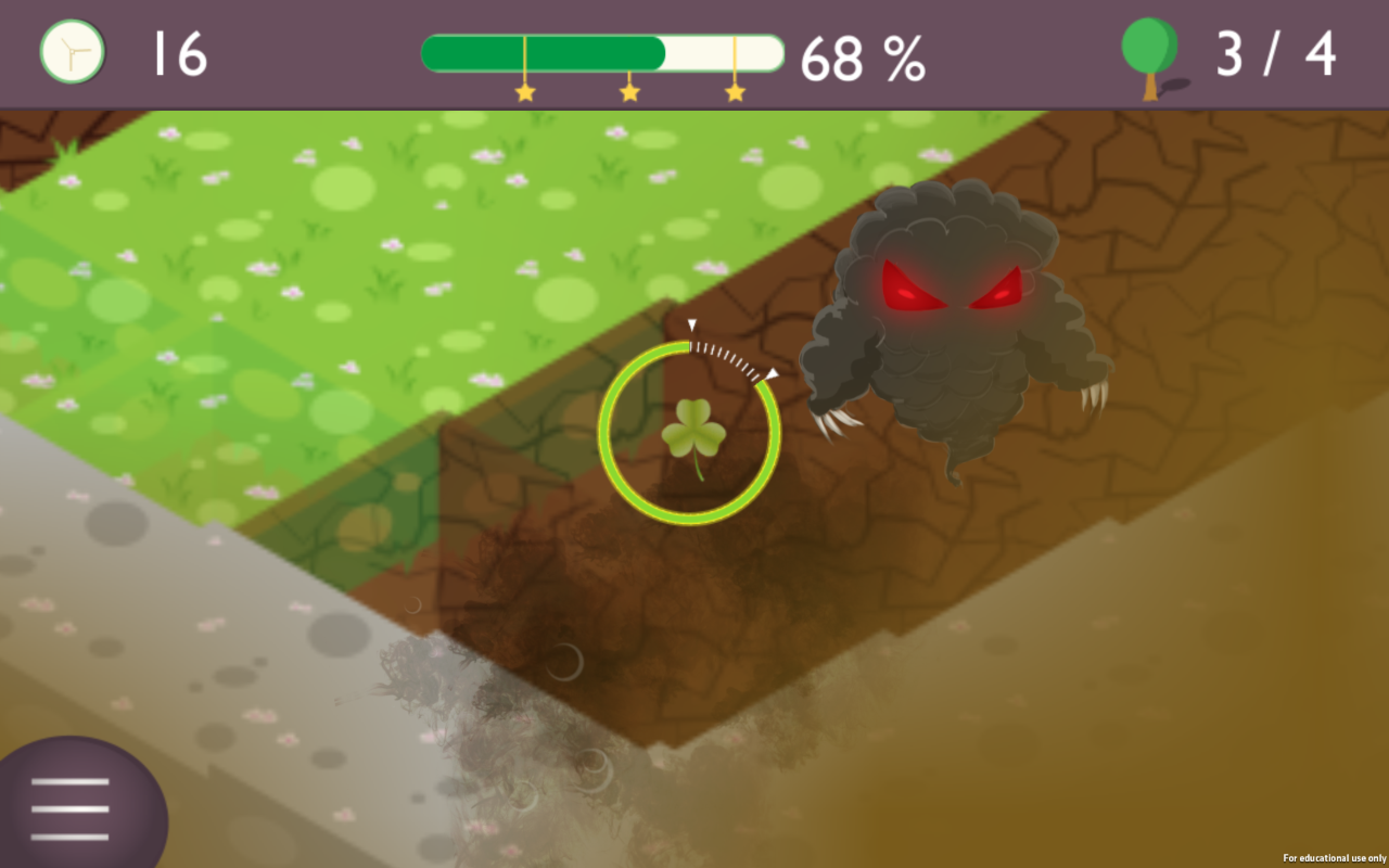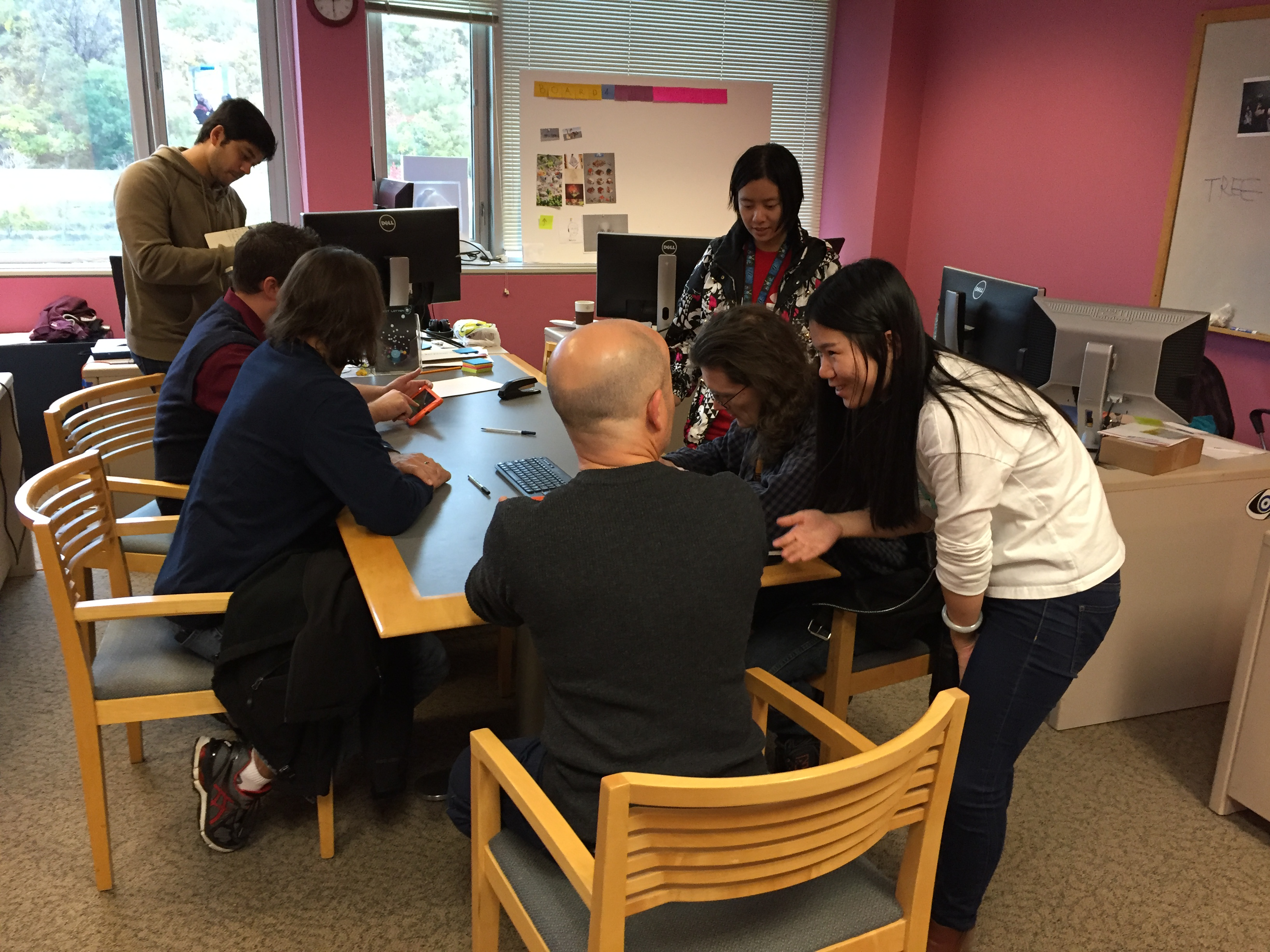Lotter-e
Xiaoxin Zhao
Irenee Liu
Jiaqi Wu
Savitra Sapre
Adam Liss
“...the goal of this project is to create a new style game that combines lottery style play and G4C (Games for Change) play geared towards creating a positive social impact within a lottery framework. This new game prototype should explore and identify how millennials play as well as how to maintain relevance and integrity for the lottery in the gaming realm.”
This was the challenge our team was presented with at the start of the semester. We worked with our clients, the North American Association of State and Provincial Lotteries and the Atlantic Lottery in Canada, to develop a free-to play mobile game, designed to highlight the entertainment and social good aspects of the lottery, and get people to play who might otherwise dislike the lottery. Given this somewhat unique design challenge, our first order of business was to meet with our clients to both understand and help them refine their goals for the semester.

We began by brainstorming ideas, and presenting them to our clients. I helped our team put together slide decks to pitch our ideas, then take the feedback we got from our clients and refine our ideas. They seemed particularly excited about the idea of a game that would encourage players to do social good outside the game, as well as some ideas we'd had for mechanics that mirrored the scratching action of a traditional scratch-off ticket. We found that the theme of air pollution could work well with both those ideas, and after creating several prototypes and playtesting them with people, we came up with our final design: Airsweeper.

The idea of the game was that the player would swipe to create wind and blow a leaf around, cleaning levels of pollution. We wanted our game to be fun first and foremost, so I did a lot of research into existing free-to-play mobile games to see what we could apply to our game. We included a number of power-ups and upgrades, which could serve as rewards for the lottery portion of our game, and we ensured the game had clear and simple goals that players would want to play over and over again. This last bit required a good deal of iteration and testing, which ended up being one of the most crucial elements of making our game successful.

We ran 4 large playtests throughout the semester, as well as smaller, informal ones along the way. For the first two, our focus was on research, figuring out what people look for in a free-to-play game as well as what they look for in a social cause. The next two were focused on the game itself, whether it was fun, engaging, and replayable. We found that tutorials and instructions were incredibly important for introducing people to our game, but once we'd added them and fine-tuned our mechanics to be more intuitive, we found that people were enjoying our game a lot, and wanting to play it over and over. We also managed to make major strides in terms of getting them to understanding the lottery and social good elements, which was what our client was most interested in. This project was a fascinating design challenge, but in the end I'm very proud of what our team accomplished.